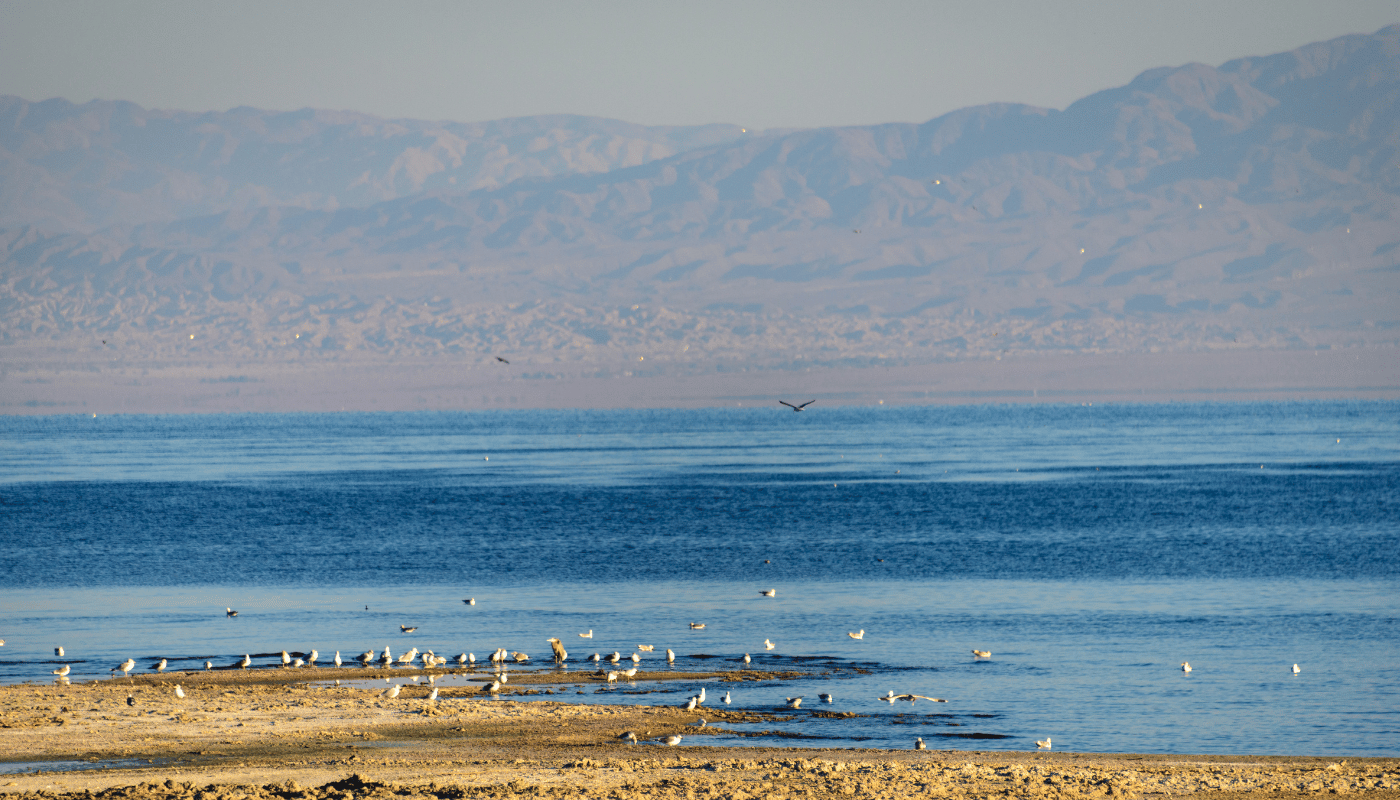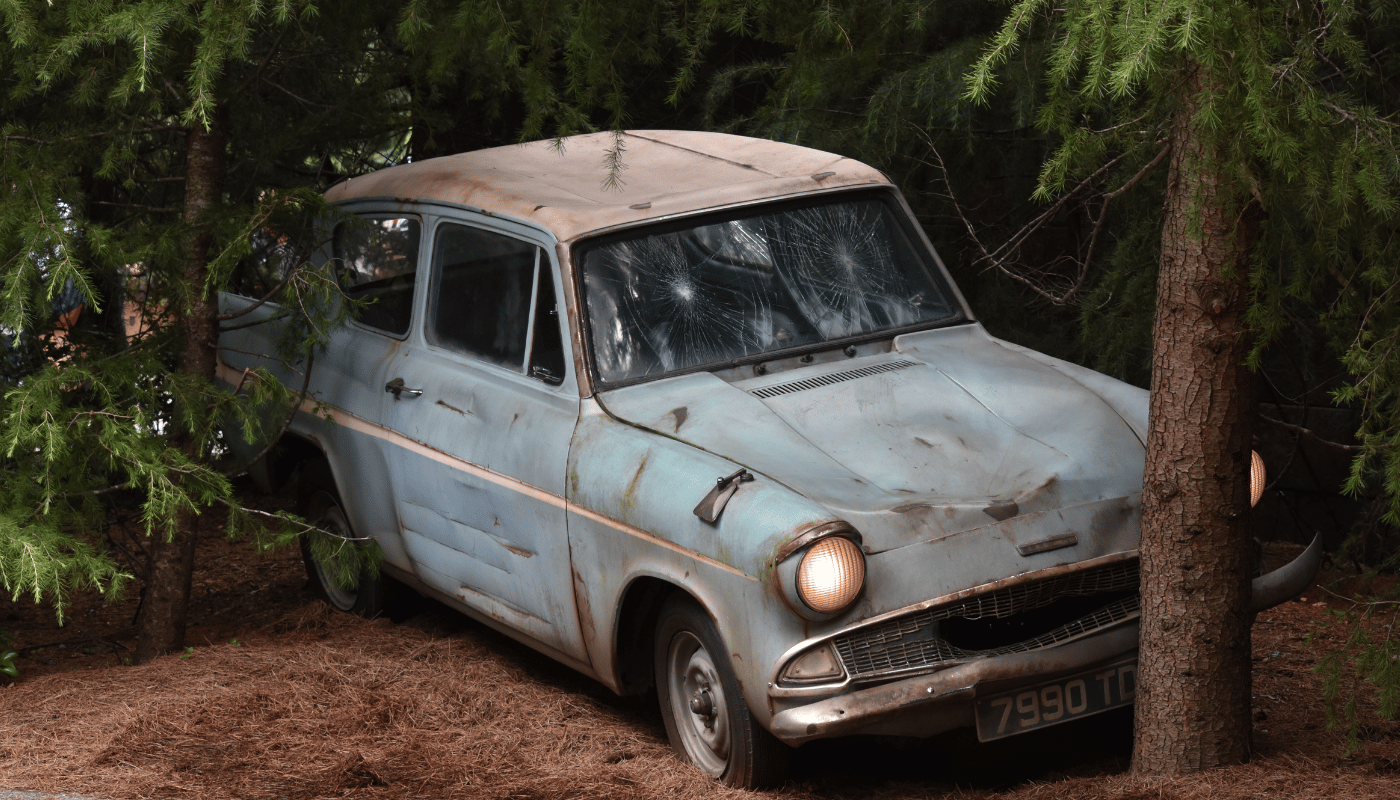Embark on a fascinating journey to uncover the origins of the Salton Sea, an enigmatic body of water nestled in California’s desert landscape. From ancient geological forces to human endeavors that reshaped the land, the tale of how the Salton Sea came into existence is as intriguing as it is complex. Discover the events that led to the creation of this accidental oasis and the pivotal moments that have defined its history. Prepare to be captivated by a story where nature and humanity intertwine.
The Geological Origins of Salton Sea
The Salton Sea, a saline lake located in California’s Imperial and Coachella Valleys, owes its existence to a complex interplay of natural and human factors. Its origins can be traced back to ancient geological transformations, yet its current state is largely the result of accidental events in the early 20th century. Understanding how the Salton Sea formed requires a journey through time, beginning millions of years ago when the area was part of the Gulf of California. Tectonic activity gradually isolated this region, creating a below-sea-level basin known as the Salton Trough.
Periodically, over millennia, the Colorado River has swelled, changing its course and depositing sediments that created vast floodplains and, occasionally, temporary lakes in this basin. The modern iteration of the Salton Sea was born out of a man-made disaster in 1905. Engineers seeking to increase water flow into the Imperial Valley for agriculture inadvertently breached a canal dike on the Colorado River. For two years, water flooded into the Salton Trough, creating the largest lake in California. While the breach was eventually sealed, the Salton Sea remained, fed by agricultural runoff and rivers, but with no natural outlet, leading to increasing salinity and environmental challenges.
These events highlight the Salton Sea’s fragile balance between natural processes and human impact. Its formation is a testament to the power of nature’s forces, reshaped by human ambition and error. The sea’s future, much like its past, is uncertain, dependent on both geological evolutions and policy decisions. Understanding its origins is crucial for any efforts aimed at preserving its ecological significance.
| Event | Date | Description |
|---|---|---|
| Formation of the Salton Trough | Millions of years ago | Geological activity separates the region from the Gulf of California. |
| Colorado River Sediment Deposits | Periodically over millennia | River changes course, creating floodplains and temporary lakes. |
| Creation of the Modern Salton Sea | 1905 | Breach of a canal dike leads to flooding from the Colorado River. |
| Sealing of the Breach | 1907 | Efforts finally succeed in stopping the flow of water into the trough. |
| Environmental Changes | 20th-21st Century | Increase in salinity and ecological challenges due to lack of outlet. |
Exploring the geological origins of the Salton Sea reveals a fascinating story of natural wonders and human endeavors. The question of how did the Salton Sea form encompasses millions of years of geological activity, alongside a pivotal moment in human engineering that led to its current state. This blend of natural and anthropogenic factors makes the Salton Sea a unique case study in the interplay between the earth’s natural processes and the impact of human actions on the environment.
The Mysterious Origins: How Did the Salton Sea Form?
The creation of the Salton Sea, nestled in California’s vast desert, is a tale of human ambition clashing with the forces of nature. This enigmatic body of water owes its existence to a series of cataclysmic events and miscalculations at the dawn of the 20th century. Originally, the area was part of the Colorado River Delta, lying below sea level. In 1905, in an attempt to increase water flow into the area for agricultural irrigation, engineers designed and constructed a series of canals. However, they underestimated the might of the Colorado River. The river, swollen with spring rains and snowmelt, breached the canal gates, unleashing a torrential flood that filled the basin over two years, creating what we now know as the Salton Sea.
This accidental sea became an oasis in the desert, for a time thriving as a resort location. However, the lack of an outflow for the Salton Sea has led to increasing salinity and pollution, causing ecological distress. The Salton Sea’s water is now saltier than the ocean, making it inhospitable for most marine life. The inflow from agricultural runoff continues to bring chemicals and salts into the sea, compounding its ecological problems. Despite these challenges, the Salton Sea serves as a critical habitat for migrating birds and supports a unique ecosystem. Its story is a poignant reminder of the unpredictable consequences of human intervention in natural landscapes.
The transformation of the Salton Sea from a flourishing resort to an ecological cautionary tale underscores the complex relationship between human development and environmental stewardship. Efforts are underway to mitigate some of the negative impacts on the Salton Sea and surrounding communities, but its future remains uncertain. The Salton Sea stands as a testament to the power of nature to both create and destroy, serving as a mirror reflecting the consequences of human actions upon the environment.
- The Colorado River’s role in the creation of the Salton Sea
- Impact of agricultural runoff on the Salton Sea’s ecology
- The Salton Sea as an important habitat for migrating birds
- Historical significance of the Salton Sea as a resort area
- Current efforts and challenges in Salton Sea restoration
Examining Human Impact on the Salton Sea
Restoration Efforts and Future Challenges
Exploring the human dimension of the Salton Sea’s ecological crisis reveals a multifaceted challenge. Restoration efforts are complex, involving water management strategies, habitat conservation, and pollution mitigation. These endeavors highlight the necessity of balancing human needs with environmental sustainability. The future of the Salton Sea is a compelling case study in the consequences of altering natural landscapes and the ongoing efforts to rectify past mistakes.
The Colorado River’s Role
The creation of the Salton Sea is a tale of natural forces and human ambition intertwining with unforeseen consequences. At the heart of this narrative is the Colorado River, a mighty waterway that has shaped the landscape of the American Southwest for millennia. Historically, the river experienced periodic floods, which were both a creative and destructive force, enriching the soil but also reshaping the land. It was during one such flooding event in the early 20th century, specifically in 1905, that the Colorado River breached an irrigation canal headwork in Imperial Valley, California.
For two years, the unrestrained river flowed into the basin, filling the ancient dry lake bed and creating what we now know as the Salton Sea. This event was not merely a testament to the power of nature but also highlighted the vulnerabilities in human engineering. Initially, the formation of the lake was seen as an accidental boon, providing a new and vast habitat for wildlife and a unique recreational area for humans. However, the lack of an outflow, combined with agricultural runoff, has led to increased salinity and pollution, challenging the sustainability of this ecosystem.
Today, the Salton Sea stands as a poignant reminder of the Colorado River’s role in shaping the environment, serving as both a creator and destroyer. It underscores the importance of understanding and respecting natural forces in the pursuit of progress and the need for sustainable management of our natural resources.
Further Insights: The Environmental Impact
Exploring deeper into the environmental effects of the Salton Sea’s formation reveals a complex web of ecological consequences. The flooding that led to the sea’s creation inadvertently transformed a vast stretch of the Colorado Desert into a vibrant yet vulnerable ecosystem. This new body of water initially attracted a diverse array of bird species and became a critical stopover on the Pacific Flyway. However, as salinity levels rose and pollution increased, the health of the aquatic and bird populations began to decline, highlighting the fragile balance of this ecosystem.
Understanding Salinity Challenges
The escalating salinity levels in the Salton Sea pose one of the most significant challenges to its survival. As the sea evaporates, it leaves behind salts and minerals, progressively making the water more toxic to fish and birdlife. This ongoing environmental crisis serves as a critical study in how natural formations, significantly altered by human activity, can create lasting ecological impacts.
| Year | Event | Impact |
|---|---|---|
| 1905 | Colorado River breaches irrigation canal | Creation of the Salton Sea |
| 1920s | Initial ecosystem development | Emergence of new wildlife habitat |
| 1950s | Recreational boom | Increased human activity and development |
| 2000s | Rising salinity levels | Decline in fish and bird populations |
| Present | Conservation efforts | Focus on sustainability and ecological restoration |
Engineering Mistakes and Flooding
The formation of the Salton Sea, a large saline lake located in the arid landscape of California’s Imperial Valley, is a tale of ambition, engineering, and unintended consequences. In the early 20th century, developers and engineers sought to transform the desert into a fertile farmland. Their plans involved diverting water from the Colorado River into the valley for irrigation. However, this grand vision was marred by a series of engineering mistakes that led to catastrophic flooding, giving birth to the Salton Sea.
The initial phase involved constructing irrigation canals to channel Colorado River water into the valley. While this endeavor was successful at first, the canals were not engineered to handle the massive silt loads carried by the river. Over time, these canals became clogged, leading to the need for more drastic measures. In 1905, heavy rainfall and snowmelt caused the Colorado River to swell, breaching the canal gates that were inadequately designed to withstand such force. The floodwaters rushed into the Salton Basin for two years, creating the modern Salton Sea. This event stands as a stark reminder of the power of nature and the consequences of human oversight.
The aftermath of the flooding was profound, transforming a vast desert expanse into a body of water visible from space. The Salton Sea became a temporary haven for migratory birds and a popular spot for recreation. However, the lack of an outlet for the lake has led to increasing salinity and pollution, posing significant environmental challenges. The story of the Salton Sea serves as a cautionary tale about the importance of comprehensive planning and respect for natural forces in engineering projects. Despite the initial intentions to create fertile lands, the legacy of the Salton Sea is marked by its environmental issues, serving as a reminder of the delicate balance between human ambition and nature’s unpredictability.
Further Insights into the Flooding Event
The flooding of the Salton Basin was not merely an accident but a culmination of factors that highlight the complexity and risks associated with large-scale engineering projects. The event underscores the necessity for meticulous design and contingency planning in the face of environmental variables. The transformation of the Salton Basin from a dry desert into a large inland sea exemplifies the profound impact human actions can have on the environment, intended or not. The Salton Sea’s creation serves as a poignant example of how engineering endeavors must always consider the long-term ecological and environmental implications.
- Initial irrigation efforts aimed at agricultural development in the Imperial Valley.
- Failure to account for the Colorado River’s silt load leading to canal blockages.
- Heavy rainfall and snowmelt in 1905 causing the Colorado River to breach irrigation canals.
- Uncontrolled flooding filling the Salton Basin and creating the Salton Sea.
- Long-term environmental challenges arising from the lake’s increasing salinity and pollution.
Salton Sea’s Evolving Ecosystem
The Salton Sea, California’s largest inland body of water, presents a fascinating study in ecological evolution and resilience. Formed by a flood in 1905, this saline lake has undergone significant changes in its ecosystem due to a combination of natural processes and human intervention. Initially, the area around the Salton Sea was vibrant with a variety of fish species, birds, and other wildlife, drawn to its waters as a crucial habitat amidst the desert landscape.
Over the years, the Salton Sea’s ecosystem has faced challenges, notably from agricultural runoff leading to higher salinity levels and pollution. These environmental stressors have resulted in the decline of certain fish species, which in turn affects the bird populations that rely on them for food. Despite these challenges, the Salton Sea remains an important stopover for migratory birds along the Pacific Flyway. Efforts to restore and conserve the Salton Sea’s ecosystem are ongoing, highlighting the importance of this habitat for biodiversity in the region.
Interestingly, the Salton Sea has become a site for scientific research and environmental studies, focusing on how ecosystems adapt to extreme conditions. Researchers are particularly interested in the microbial life that thrives in its high-salinity waters, which could offer insights into potential life on other planets. This aspect underscores the Salton Sea’s role not only as a crucial environmental resource but also as a unique laboratory for studying life’s adaptability in harsh environments.
Further Insights into Salton Sea’s Ecosystem
The evolving ecosystem of the Salton Sea serves as a microcosm for studying the effects of human activities on natural habitats. Restoration projects aimed at reducing salinity and controlling pollution are critical for the survival of this unique ecosystem. These efforts include creating wetlands to filter agricultural runoff, which also provides additional habitat for wildlife. The challenges faced by the Salton Sea are emblematic of broader environmental issues, making it a critical case study for ecologists and conservationists alike.
Deepening Our Understanding of Salton Sea’s Ecology
As we delve deeper into the complexities of the Salton Sea’s ecosystem, it becomes clear that interdisciplinary approaches are necessary to address its environmental issues. Collaboration between ecologists, hydrologists, and environmental engineers is crucial in developing strategies that balance the needs of wildlife conservation with those of the surrounding human communities. The Salton Sea’s story is a poignant reminder of the delicate balance between nature and human activity, and the need for sustainable management of our natural resources.
- Introduction of non-native species and its impact on the ecosystem.
- Effects of agricultural runoff on water quality.
- Conservation strategies for threatened and endangered species.
- Role of wetlands in ecosystem restoration.
- Scientific research and discoveries based on Salton Sea’s unique conditions.
Human Intervention and Consequences
The Salton Sea, North America’s largest inland body of water, is a testament to the profound impact of human intervention on natural landscapes. Initially formed in 1905 due to a breach in irrigation canals from the Colorado River, this vast saline lake in California’s desert is both a marvel and a cautionary tale. Engineers sought to enhance water supply to the arid Imperial Valley for agriculture, but their efforts inadvertently led to the creation of the Salton Sea. Over the years, the sea became a recreational hotspot, with thriving communities and a burgeoning economy.
However, the consequences of human actions soon became evident. The lake’s existence, sustained by agricultural runoff, brought with it a host of environmental challenges. The Salton Sea began shrinking, its salinity levels rising to surpass that of the Pacific Ocean, making it inhospitable for most fish and bird species. This ecological shift turned the area into a near wasteland, with abandoned towns and ecological decay. The high salinity and pollution levels have not only affected wildlife but also pose significant health risks to nearby human populations, with airborne toxic dust from the drying lakebed contributing to severe respiratory issues.
Efforts to mitigate these impacts have been complex and multifaceted, involving state and federal agencies, local communities, and international stakeholders. The challenges of restoring or even stabilizing the Salton Sea are immense, requiring innovative solutions to balance ecological health, water rights, and the socio-economic well-being of the region. The story of the Salton Sea serves as a poignant reminder of the unintended consequences of altering our natural environment and the urgent need for sustainable water and land management practices.
Rehabilitation Efforts and Future Prospects
The journey towards rehabilitating the Salton Sea and its surroundings is fraught with challenges yet filled with potential. Projects aimed at habitat restoration, water quality improvement, and dust suppression are underway, supported by a combination of state funding, federal assistance, and private sector innovation. These efforts underscore the critical need for collaborative approaches to environmental management, where science, policy, and community engagement intersect to heal a landscape deeply scarred by human intervention.
Understanding the Complexity of Restoration
Delving deeper into the rehabilitation of the Salton Sea reveals the intricate balance required between ecological restoration and meeting human needs. Each project, from creating wetlands to suppress dust to introducing desalination technologies, is a step toward understanding and mitigating the impact of decades of environmental neglect. The path forward is uncertain, but the commitment to restoring the Salton Sea symbolizes a broader recognition of our responsibility to the planet and future generations.
- Assessment of current ecological and health impacts.
- Implementation of habitat restoration projects.
- Introduction of air quality improvement measures.
- Development of sustainable water management strategies.
- Engagement with local communities for inclusive decision-making.
The Salton Sea’s Future Challenges
The Salton Sea, California’s largest lake, faces a multitude of challenges that threaten its very existence and the health of the surrounding ecosystem. Over the years, the Sea has become a focal point for environmental concerns, including water scarcity, pollution, and habitat destruction. The diminishing inflows due to agricultural water transfers and climate change have led to a significant decrease in water levels, exposing the lakebed and releasing toxic dust into the air. This poses a severe risk to public health in nearby communities and the ecological balance of the area.
Moreover, the increasing salinity of the Salton Sea has threatened the biodiversity within its waters, putting numerous bird species at risk and disrupting the habitat of fish populations. Efforts to address these issues have been complex and multifaceted, involving local, state, and federal stakeholders. Restoration projects aimed at water conservation, habitat preservation, and air quality improvement have been proposed and, in some cases, implemented. However, the scale of the problem and the required investment for sustainable solutions pose ongoing challenges.
The future of the Salton Sea is uncertain, with debates surrounding its restoration and management continuing to evolve. The need for innovative, long-term strategies is critical to prevent further environmental degradation and to safeguard the health and well-being of the region’s residents and wildlife.
Additional Insights: Navigating the Restoration Efforts
Exploring the manifold restoration efforts for the Salton Sea offers further context into the challenges faced. The initiatives range from reducing the Sea’s salinity levels to creating wetlands that serve both as a natural habitat for wildlife and a dust suppression mechanism. These efforts underscore the complexity of the ecological, health, and socio-economic issues at play. Engaging the community and ensuring that restoration plans are both effective and sustainable are keys to the Sea’s future.
A Closer Look at Restoration Projects
Delving deeper into specific restoration projects provides a clearer picture of the potential solutions and the hurdles they encounter. Projects such as the Salton Sea Species Conservation Habitat and the Red Hill Bay Project illustrate the innovative approaches being taken to address the Sea’s challenges. Yet, funding constraints, bureaucratic hurdles, and the sheer scale of the environmental issues highlight the ongoing struggle to restore the Salton Sea to a state of ecological balance.
| Project Name | Objective | Status |
|---|---|---|
| Salton Sea Management Program | Reduce dust emissions and improve water quality | Ongoing |
| Species Conservation Habitat | Create habitat for fish and bird species | In Progress |
| Red Hill Bay Project | Restore wetlands to suppress dust | Delayed |
| Desalination Research | Investigate methods to reduce salinity | Under Review |
| Community Engagement Initiatives | Involve local communities in restoration efforts | Active |
In conclusion, the Salton Sea’s future is fraught with challenges that demand innovative solutions and concerted efforts from all stakeholders. The complexity of its issues requires not only immediate action but also a long-term commitment to restoration and management strategies that are sustainable and inclusive. As efforts continue to unfold, the hope is that these initiatives will pave the way for a revitalized Salton Sea, benefiting both the environment and the communities that depend on it.




Leave a Reply